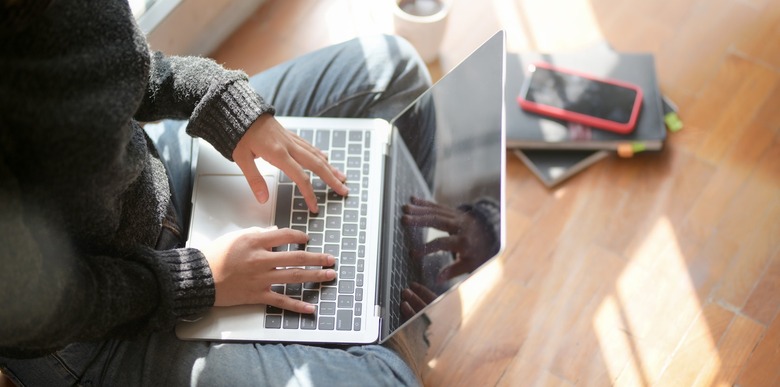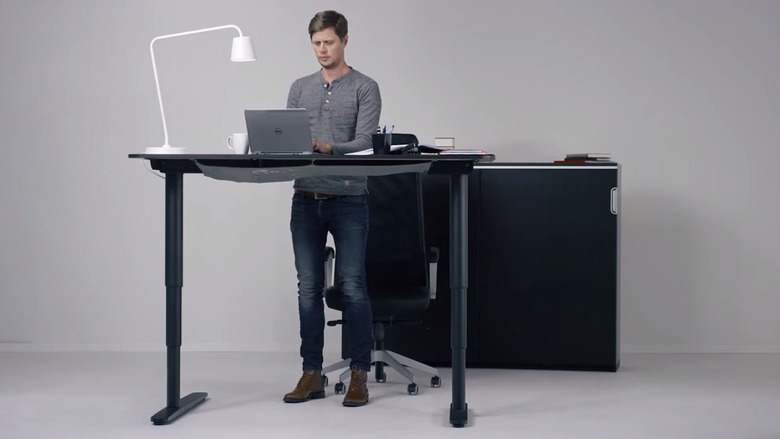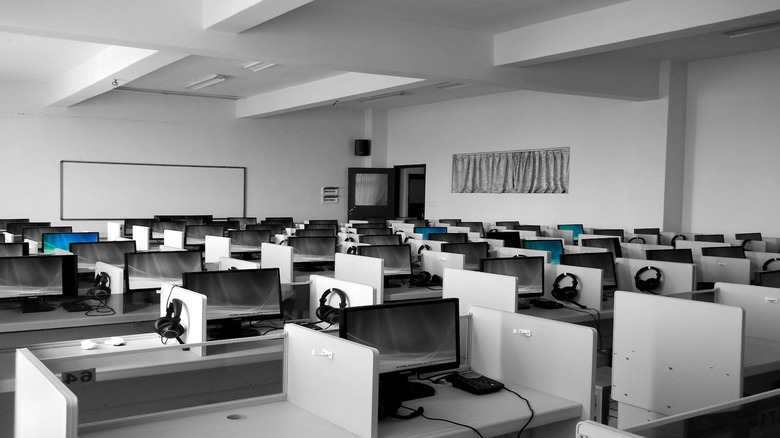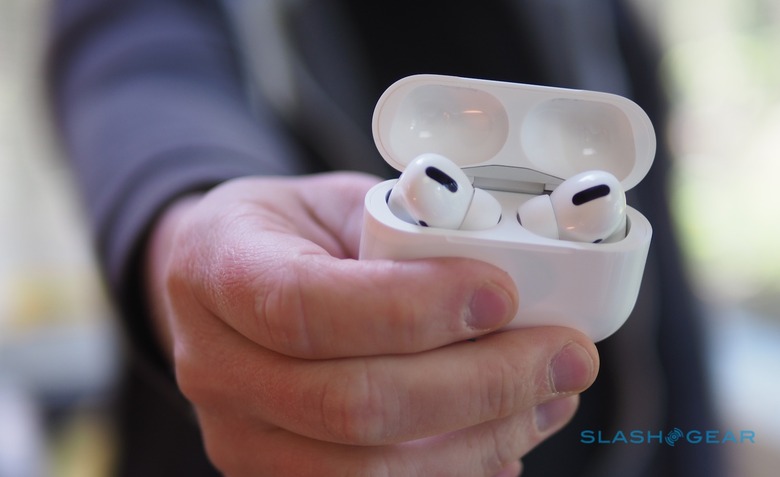So You're Stuck Working From Home... How To Handle Quarantine
We may receive a commission on purchases made from links.
Offices are closing, schools are canceling classes, and a whole lot of people used to the 9-5 are finding themselves working from home as the world gets to grips with coronavirus. COVID-19 has emptied businesses and sent employees home, and for many it'll be their first taste of working remotely. Don't worry, though – I've got you covered.
There have been plenty of "working from home" guides for those newly-ousted from their offices, so why should you listen to me? Well, I've been a home-worker for more than a decade now, across several different cities and in everything from tiny apartments to dedicated home office space. My partner has also worked from home for a fair number of years as well, so we've had to figure out how to share space, too. I'm not going to claim we've got it all figured out, but we're definitely firmly onboard #TeamNoCommute.
Over the years I've tried most of the home office trends. Standing desks. Treadmill desks. A 12-inch laptop through to multiple displays. With that in mind, here's what I think work-from-home newbies should be focusing on, how to avoid the most common starter mistakes, and where you're better off spending money – and where you can save it.
The best home workspace needs boundaries
Having a dedicated home office space can be a real luxury. There's a lot to be said for the ability to close the door and have anyone else at home know you're in "work mode" and that it's not open-season to disturb you. At the same time, it's great to be able to close that door at the end of the day and switch your brain back into "home mode" again.

Not everyone has the right space for that to work out, of course. Maybe the only real workspace you have access to at home is the kitchen table, or even perching your computer on your lap on the sofa. That makes setting boundaries a little tougher, but it's not insurmountable if you put your mind to it.
For me, it's about getting into the habit of putting my work things away when I'm "clocking out" so that it doesn't feel like I'm living at my office. Maybe you put your laptop back into your work bag and leave that by the door; if you have papers and more to deal with, a big plastic box you can put everything into helps with the whole "out of sight, out of mind" approach.
If you're sharing space with someone else, there need to be pre-established boundaries there, too. Otherwise things can get tense very quickly. If you can't close the door on family, then having a recognized indicator that you're focusing – whether it's that you're wearing your noise-cancelling headphones, or you have a sign taped up saying when you'll next be taking a break – sets the expectation that just because you're physically present, that doesn't mean you're mentally available. When family just don't get the message, consider posting up your "office hours" showing when you'll be free to talk to them, and make sure to stick to those times to help build consistency.
A DIY standing desk is a good way to avoid laziness - and expense
Standing desks needn't be expensive. Even if you're looking at fancy motorized ones, that can adjust their height across different levels, they're in the region of hundreds of dollars these days, not thousands. If you can live with a fixed-height standing desk, you can do that even more cheaply with a table top and legs from IKEA.

Even that's overkill, I think, though, especially if you're just starting working from home – or if it's only going to be temporary. While I've tried several commercially-available desks, I've also made my own standing surfaces out of stacks of boxes and books, and it arguably works just as well. The important part is getting the ergonomics right: your posture and the position of your keyboard and other peripherals, in relation to your body. It can actually be easier to do that by simply adding or removing a book or box from the pile.
What I'd recommend anyone getting into working while standing invest in is a decent floor mat. While you can save cash on the workstation, over the course of a day – or even a few hours – your feet and legs are going to get sore. An anti-fatigue floor mat costs from around $40, though you can spend much more, depending on the thickness and size of the mat, and the materials it's made from. I went for this one and my feet have thanked me for it.
The other good thing about a DIY standing desk is the ability to take it all down again at the end of the day. That's a good mental notifier that it's time to stop thinking about work and start focusing on relaxing; it's basically the home-worker's equivalent of the commute.
Don't forget to move
One thing I noticed pretty quickly after starting to exclusively work from home is that I moved a lot less. The fact that I'm terrible at going to a gym or exercising in general didn't help there, either. Combine that with proximity to the kitchen for easy snacking, and it's a recipe for putting on weight.
I'm going to level with you, I still snack. Partly I write that off as an opportunity to get up and move about – even if it's only from my desk to the kitchen. For the same reason, rather than making one big pot of coffee and then chugging caffeine all day, I now make it a cup at a time. That way, I'm getting up and moving about a little more, and more conscious of my overall caffeine intake.

The answer to most snacking is to remember to eat regular meals. Just because you have access to your kitchen, don't expect to be whipping up a full and healthy lunch every day. In my experience it's the lowest hanging fruit that you go for each time, which tends to mean meals end up as "a handful of lunch meat and some potato chips." And that's on a good day.
Planning ahead and having something, anything more substantial is key. That might be as simple as setting out a can of soup, the pan to heat it up in, and a bowl and spoon, so that you've as little excuse as possible not to have that instead of half a pint of ice cream. If you feel more full, you'll snack less, rather than grazing through the day and discovering that you've loaded up on empty calories.
Getting out of the house may not seem like such a great idea in the current health climate, but taking a walk around the block or even a jog through the park is important too. If you're new to working remotely, that might be a good opportunity to call a friend or coworker and have a catch-up too. Staving off loneliness is just as vital as having the right workspace established.
Just be careful not to get too distracted. I spend a lot of time on Twitter, and have to remind myself sometimes that there's still writing to be done. If you're a gamer, it might be a good idea to hide the controller until you're officially clocked-off. Putting on Netflix in the background also seems ill-advised; I've found I can handle music without it being a distraction, but anything with visuals will drag my attention away.
Don't be surprised if conversation dries up
Going from both my partner and I working in offices, to each working from home, had an unexpected side-effect: we just didn't have the same workplace stories to share as we were cooking dinner or sitting down to eat. It might seem silly, but those passing anecdotes about what a colleague told you about their kids, or chatting about a new TV show in the office kitchen translates to topics of conversation at home. Without them, it can get quiet pretty quickly.

I'm not going to say you should write a list of "Things To Discuss" over your evening meal, but being aware that conversation is another important element of getting you out of the "working" headspace and into the "home" one is really useful. Maybe you take ten minutes to read something online that isn't directly related to work, and which you know your partner might be curious about too. Perhaps there's a podcast you could listen to while you're out on that walk, which will give you something to bring up that evening.
This isn't debate club: don't feel like you have to script it out. At the same time, though, it's easy to get caught up in the same four walls, whether that's because you're working from home or under self-quarantine.
Three things home workers should spend money on
It's easy to think that you need to replicate your whole office setup at home in order to be productive. Certainly, if you're used to a multi-monitor rig then going from that to a single laptop screen is going to be jarring. All the same, just as with a standing desk, I think there are places it makes sense to spend money – and other areas where you don't need to.
The first place to start is your chair. Sure, you can sit at a kitchen chair and be productive, but your back will likely come to regret it. There are plenty of reviews out there for work chairs that won't necessarily break the bank, but no replacement for heading to a store and actually sitting on a few. I love my HAG Capisco 8106, for example, but it's not for everyone. If you're working standing up, of course, then budget for that floor mat as well.

A decent headset is a good place to spend, too. Preferably something you can listen to music on comfortably, if that's what helps get you in the groove, as well as make voice and video calls to keep in touch with colleagues and other businesses. I've always been a fan of Plantronics' headsets, but Apple's AirPods Pro and other recent Bluetooth headphones are rapidly making a dedicate work headset redundant. One thing I've discovered is that, personally, ear-hook headsets can be more comfortable for extended periods of wear than in-ear buds.
Finally, take advantage of being at home and consider doing something new in the kitchen. A crockpot is great for that, or even a smoker if you're feeling adventurous, though I'd go for a pellet-based one since then you don't have to keep monitoring the temperature every thirty minutes. One of the reasons I love not having to go into the office is the ability to start something for dinner in the morning, and have a relatively time- (but not effort-) consuming meal ready by the evening. Make enough, and you should have leftovers for lunch tomorrow... and you won't even have to share it with greedy coworkers.
